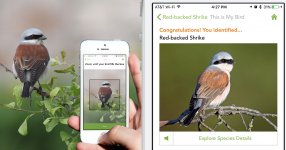idaviesbird
eBird Project Coordinator
Merlin Bird ID is now available for the first batch of birds in Europe. Answer a few easy questions or snap a photo, and get real-time answers to your bird ID questions. Europe: Great Britain and Ireland features 250 species with ID text written by Steve N.G. Howell, stunning images and audio from your eBird contributions that are archived in the Macaulay Library, and Merlin’s well-known Photo ID. Stay tuned in the coming months for coverage of more uncommon species in the UK and Ireland as well as more of Europe. Give Merlin a try today.
While Merlin is primarily known for its identification features, there is even more great functionality that cements Merlin as an invaluable addition to any birder’s phone. Regional bird packs give you instant access to songs and calls for each species you might encounter, hand-picked by the Macaulay Library archivist team. Additionally, Merlin provides quick access to eBird data in the form of custom ‘likely lists’—just choose your location anywhere in the world and get a list of the most likely birds to encounter in the area.
Photo ID now covers 1,700 North American and European birds which includes all the species that will be included in two additional packs covering Northern and Western Europe. These packs will be out in time for the British Birdfair, so if you happen to be there, stop in at the Cornell Lab of Ornithology booth, grab some Merlin and eBird stickers, and say hi!
While Merlin is primarily known for its identification features, there is even more great functionality that cements Merlin as an invaluable addition to any birder’s phone. Regional bird packs give you instant access to songs and calls for each species you might encounter, hand-picked by the Macaulay Library archivist team. Additionally, Merlin provides quick access to eBird data in the form of custom ‘likely lists’—just choose your location anywhere in the world and get a list of the most likely birds to encounter in the area.
Photo ID now covers 1,700 North American and European birds which includes all the species that will be included in two additional packs covering Northern and Western Europe. These packs will be out in time for the British Birdfair, so if you happen to be there, stop in at the Cornell Lab of Ornithology booth, grab some Merlin and eBird stickers, and say hi!





